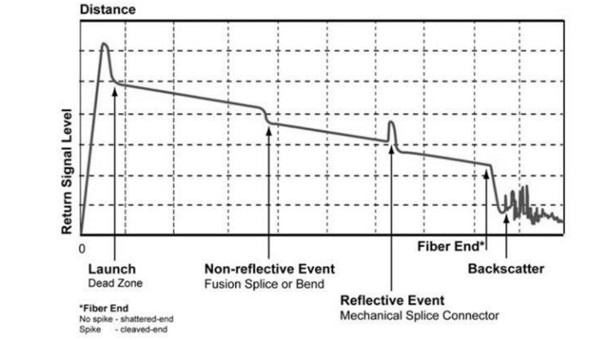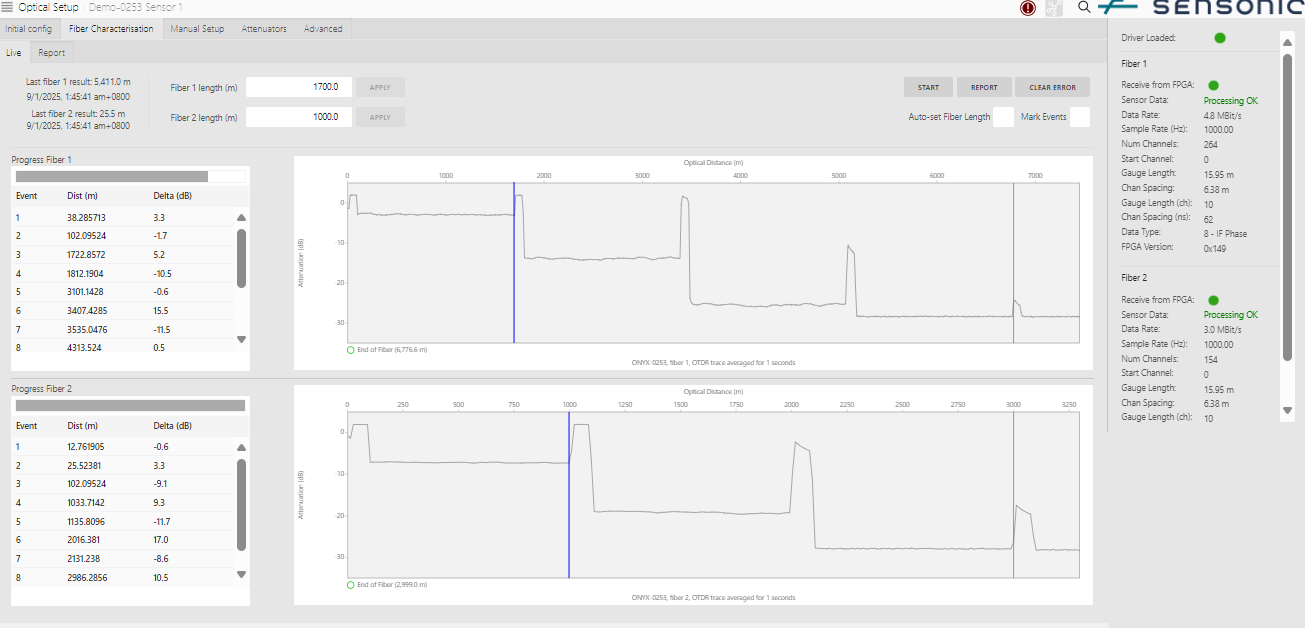OTDR stands for Optical Time Domain Reflectometry. It is a crucial testing technique used in fiber optic industries to characterise and troubleshoot optical fibers. OTDR is an acronym also used to describe the instrument which uses this technique – an Optical Time Domain Reflectometer.
What is OTDR for?
The primary purpose of an OTDR is to measure the integrity and performance of fiber optic cables. It helps technicians identify faults, measure the length of the fiber, locate splices and connectors, and assess the overall quality of the fiber link. This can be essential for installation, maintenance, and troubleshooting in fiber optic networks.
 An example OTDR trace showing key fiber features
An example OTDR trace showing key fiber featuresHow does OTDR work?
- Light Pulses: An OTDR sends a series of short light pulses into the fiber optic cable. These pulses travel down the fiber and are partially reflected at points where there are changes in the refractive index, such as at splices, connectors, or faults
- Backscattered Light: As the light travels through the fiber, a small portion of it is scattered back toward the OTDR due to Rayleigh scattering. The OTDR measures this backscattered light over time
- Time Measurement: By measuring the time it takes for the light pulses to return, the OTDR can determine the distance to the point of reflection or scattering. This is based on the principle that light travels at a known speed in the fiber
- Data Analysis: The OTDR generates a trace or graph that displays the amount of backscattered light as a function of distance along the fiber. This trace provides valuable information, including:
- Fiber Length: The total length of the fiber can be determined from the trace
- Loss Events: The OTDR can identify points of significant loss, which may indicate issues such as poor splices, connectors, or breaks in the fiber
- Reflectance: The amount of light reflected back at connectors or splices can be analysed to assess the quality of these connections
Applications of OTDR
- Installation: During the installation of fiber optic networks, OTDRs are used to verify the quality of the installation and ensure that the fiber meets specified performance standards
- Maintenance: OTDRs are essential for routine maintenance, allowing technicians to monitor the health of the fiber network and identify potential issues before they lead to failures
- Troubleshooting: When problems arise in a fiber optic network, OTDRs help locate the exact point of failure, making repairs more efficient
Summary
An Optical Time-Domain Reflectometer (OTDR) is an essential tool in the fiber optics industry, providing critical insights into the performance and integrity of fiber optic cables. Its ability to identify issues and measure key parameters makes it invaluable for installation, maintenance, and troubleshooting of fiber optic networks.
 Example of twin fibers on our DAS unit showing locations of mechanical fiber connectors
Example of twin fibers on our DAS unit showing locations of mechanical fiber connectors

